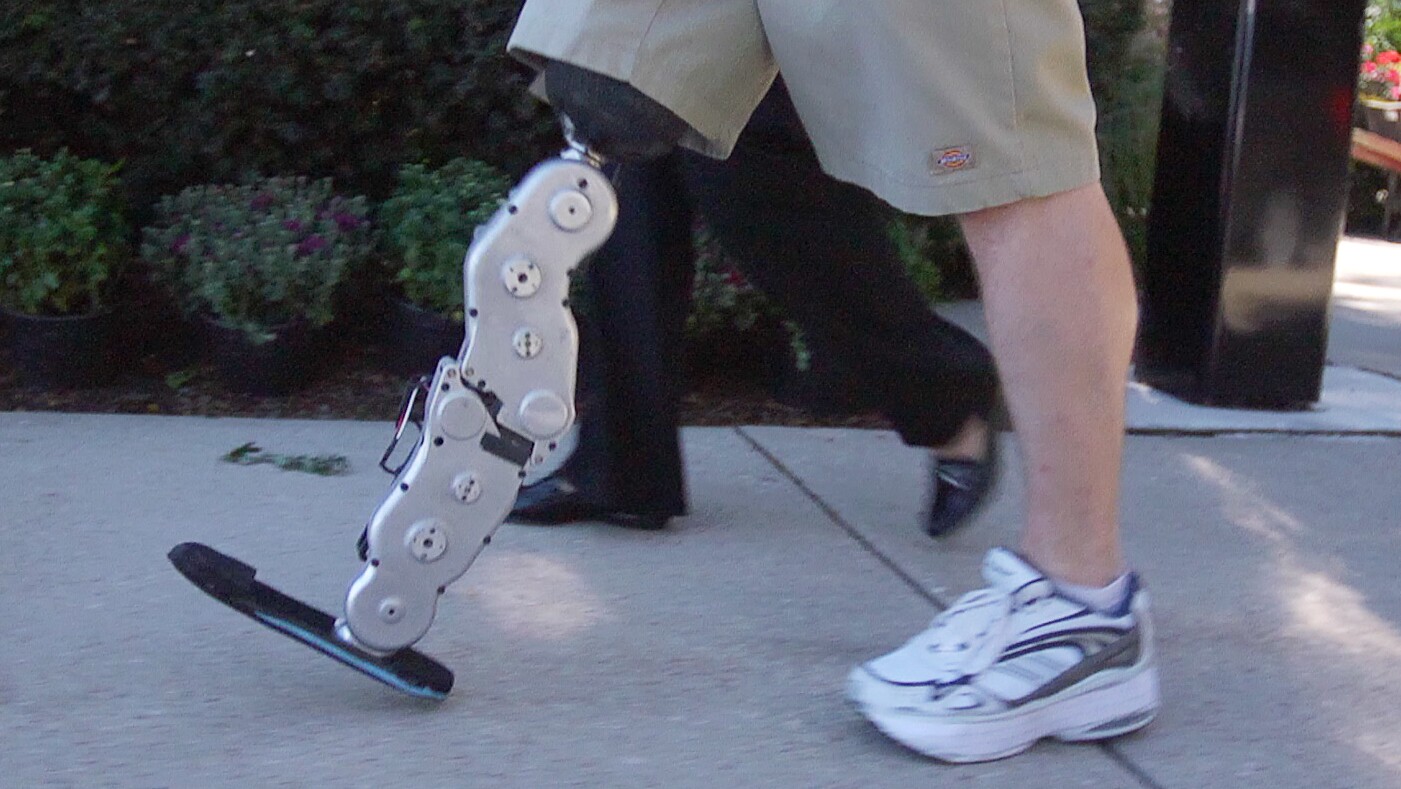Despite losing most of his right leg in a motorcycle accident, Zac Vawter (31) intends to climb all 103 flights of stairs at Chicago's Willis Tower this Sunday. He's been helping researchers at the Rehabilitation Institute of Chicago (RIC) test a cutting-edge bionic leg that is controlled by his own nerve impulses. He can walk, kick a ball, and climb stairs by simply thinking of what he wants his leg to do.
Prosthetic legs are divided into three categories: Conventional feet, energy storing-and-returning (ESR) feet, and bionic feet. Conventional feet aren't much better than early wooden legs, making them uncomfortable and the least natural. ESR feet, like the recently unveiled AMP-Foot 2.0, use springs (and sometimes actuators) to assist with walking, so that the user doesn't have to waste energy compensating for their prosthesis. Bionics take ESR technology to the next level by allowing the user to control the limb with their own nervous signals.
When Vawter's leg was amputated, a surgeon prepared him for a bionic leg by attaching nerves from his lower leg to his hamstring in a procedure called Targeted Muscle Reinnervation (TMC). RIC pioneered the procedure and developed a bionic arm back in 2005 for upper-arm amputees that, like the bionic leg developed at Vanderbilt University, can be controlled through nerve impulses detected by a series of electrodes attached to the skin.

For the time being, the bionic leg is an US$8 million dollar research project funded by the U.S. Department of Defense, but the goal is to build a commercial prosthesis that will dramatically improve lives. Researchers at Vanderbilt are collaborating with labs at MIT, the University of Rhode Island, and the University of New Brunswick to bridge the gap.
The climb, which will help raise funding for RIC, is expected to take Vawter about an hour with a battery change or two along the way. He wants to help raise public awareness for the RIC, which has already outfitted more than 50 patients, including U.S. service members who have lost limbs in combat, with the institute's bionic arm.
The bionic leg can be seen in action in the video below.
Source: Rehabilitation Institute of Chicago














